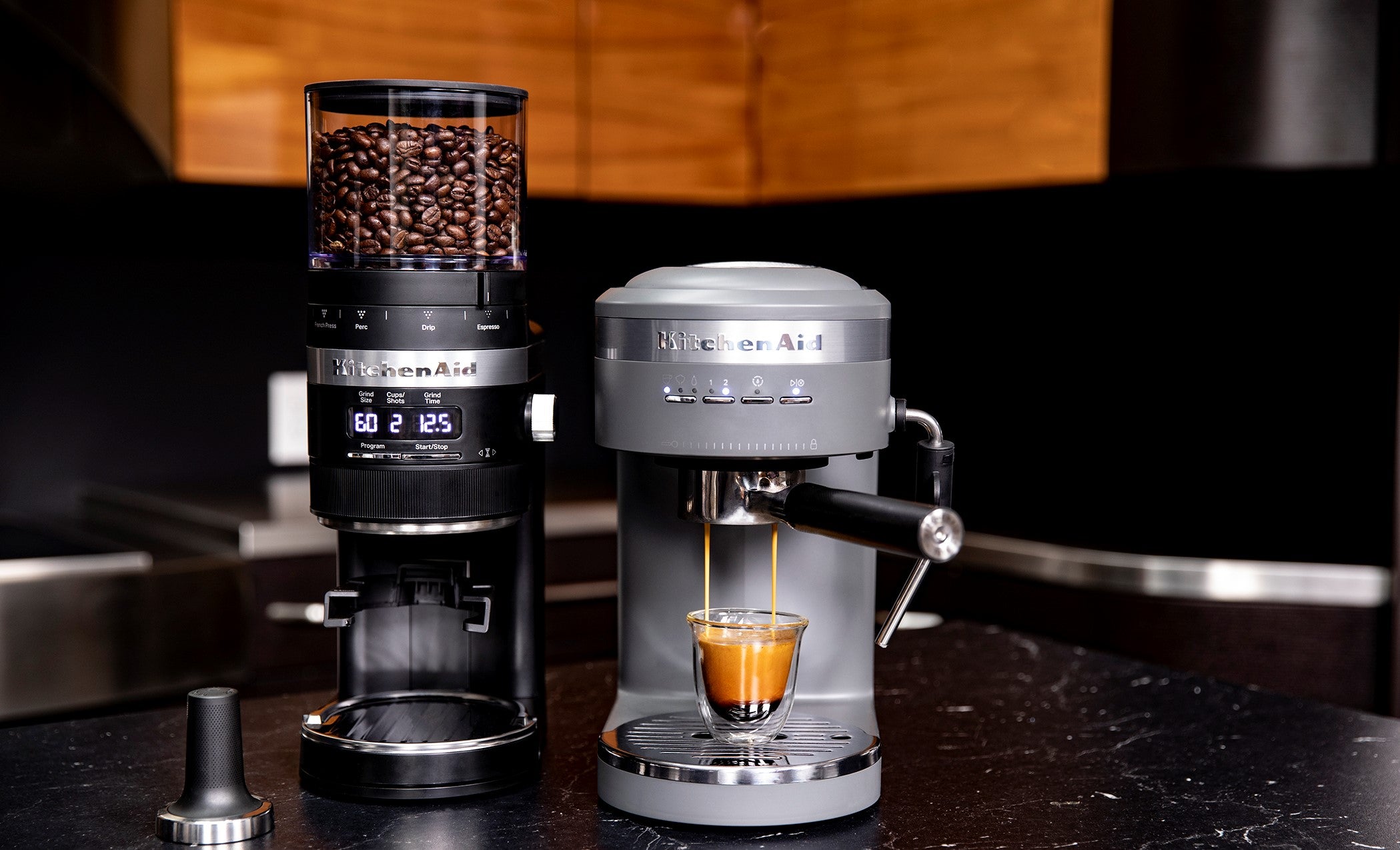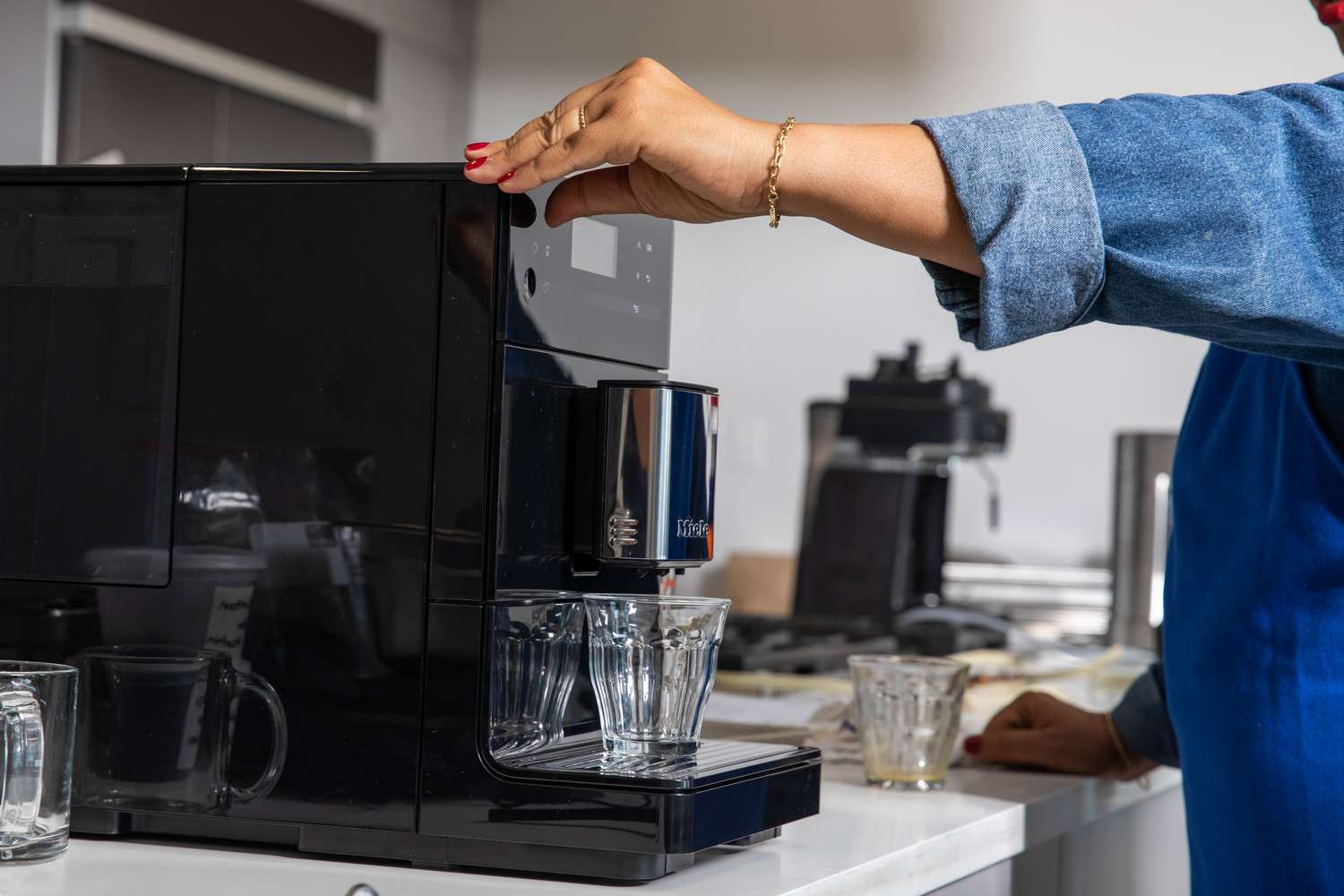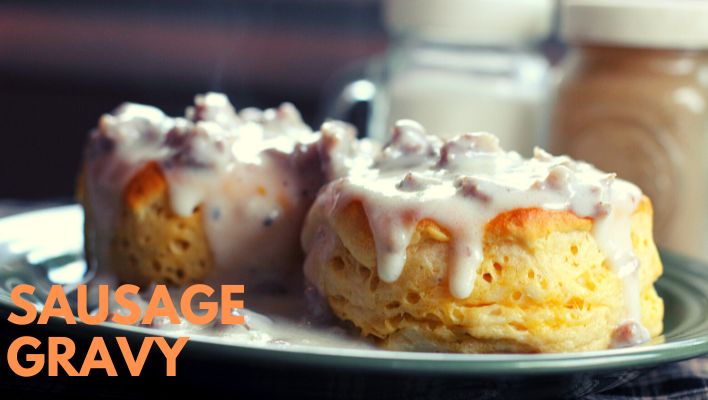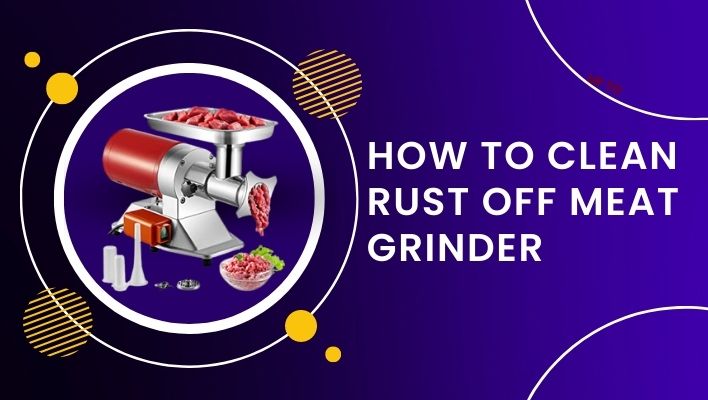Yes, you can use espresso grind in a drip coffee maker. Espresso grind is finer than regular drip coffee grind, but it can still be used in a drip coffee maker to make a strong and flavorful cup of coffee.
However, it is important to note that using espresso grind in a drip coffee maker may result in a stronger cup of coffee, so you may need to adjust the amount of coffee grounds used to achieve your desired taste.
Experimenting with different ratios will help you find the perfect balance for your individual preference. Enjoy your delicious cup of coffee!
Understanding The Difference In Grind Sizes
When it comes to brewing a delicious cup of coffee, the grind size plays a crucial role in determining the flavor and strength of the brew. Whether you are using a drip coffee maker or an espresso machine, understanding the difference in grind sizes is essential for achieving the perfect extraction. In this article, we will explore the importance of grind size in coffee brewing and provide an overview of different grind sizes for various brewing methods. So, if you have ever wondered whether you can use espresso grind in your drip coffee maker, read on to find out!
Importance Of Grind Size In Coffee Brewing
The grind size of your coffee beans directly impacts the extraction process and ultimately affects the taste of your brewed coffee. This is because the surface area of the coffee particles determines how quickly the flavor is extracted. Finely ground coffee has a larger surface area compared to coarsely ground coffee, allowing the hot water to extract more flavor and aroma.
When you use a drip coffee maker, the water flows through the coffee grounds in a relatively short amount of time. If the grind size is too fine, the water will have difficulty passing through the compacted grounds, resulting in a bitter and over-extracted brew. On the other hand, if the grind size is too coarse, the water will flow too quickly, leading to an under-extracted and weak cup of coffee.
Overview Of Different Grind Sizes For Various Brewing Methods
Now that you understand the importance of grind size in coffee brewing, let’s take a look at the different grind sizes for various brewing methods:
| Brewing Method | Grind Size |
|---|---|
| Drip Coffee Maker | Medium |
| Espresso Machine | Fine |
| French Press | Coarse |
| Cold Brew | Extra-coarse |
For a drip coffee maker, a medium grind size is recommended. This allows the water to pass through the coffee grounds at an optimal rate, resulting in a well-extracted and balanced cup of coffee. Finely ground espresso coffee is not suitable for a drip coffee maker as it can lead to clogging and over-extraction.
On the other hand, if you are using an espresso machine, a fine grind size is necessary to achieve a strong and concentrated shot of espresso. The pressure exerted by the machine ensures that the water is forced through the tightly packed grounds, extracting the intense flavor characteristic of espresso.
In conclusion, understanding the difference in grind sizes is essential for brewing the perfect cup of coffee. While using espresso grind in a drip coffee maker is not recommended, selecting the appropriate grind size for each brewing method ensures optimal extraction and a flavorful result. Experiment with different grind sizes to find your preferred taste and enjoy the wonderful world of coffee brewing!
Characteristics Of Espresso Grind
Espresso grind is a specific type of coffee grind that is used in the preparation of espresso shots. It has distinct characteristics that set it apart from other grinds and make it ideal for use in espresso machines. Understanding these characteristics can help you better appreciate the nuances and flavors of your espresso. In this section, we will explore the differentiators of espresso grind and the impact it has on espresso extraction.
What Makes Espresso Grind Different From Other Grinds
Espresso grind stands out from other grinds primarily due to its fine texture. While other coffee grinds such as medium and coarse have larger particles, espresso grind is much finer, resembling the consistency of powdered sugar. This fineness is achieved by grinding the coffee beans to a specific degree, enabling an ideal extraction process for espresso.
Fine Texture And Its Impact On Espresso Extraction
The fine texture of espresso grind plays a crucial role in the extraction of flavors during the brewing process. The small size of the particles allows hot water to permeate the coffee bed quickly, extracting the desired oils, flavors, and aromas in a matter of seconds.
Moreover, the fine grind enables a balanced extraction, meaning the water can dissolve the coffee solids evenly. This balance is essential as it prevents over-extraction, where coffee becomes too bitter, or under-extraction, resulting in a weak-tasting espresso.
By finely grinding the coffee beans, the increased surface area allows for a higher extraction rate and a more pronounced flavor profile. The resulting espresso shot exhibits a rich, syrupy consistency with a robust flavor that is distinctively different from other brewing methods.
To summarize, the fine texture of espresso grind ensures a quick and balanced extraction process, resulting in a vibrant and intense espresso shot.
The Compatibility Of Espresso Grind In Drip Coffee Makers
Exploring The Potential Challenges
Drip coffee makers are designed to work best with medium to coarse grinds, which allow for optimal extraction of flavours. However, using espresso grind in a drip coffee maker may present some challenges. The finer texture of espresso grind can lead to a slower extraction process, potentially resulting in over-extraction and a bitter taste in the brewed coffee.
Additionally, the smaller particles in the espresso grind may cause clogging within the drip coffee maker’s filter, resulting in a slower brewing time or even water overflow. This can significantly affect the taste and consistency of the brewed coffee.
And Benefits Of Using Espresso Grind In A Drip Coffee Maker
While there may be challenges associated with using espresso grind in a drip coffee maker, there are also potential benefits to consider. The finer grind can offer a more intense and concentrated flavor profile in the brewed coffee. Due to the slower extraction process, it can extract more oils and essences from the coffee grounds, resulting in a richer and bolder taste.
Furthermore, if you prefer a stronger cup of coffee or enjoy experimenting with different brewing techniques, using espresso grind in a drip coffee maker can be an opportunity to achieve a unique and robust brew.
While using espresso grind in a drip coffee maker may pose some challenges in terms of extraction and potential clogging, it can also offer the potential for a more intense and flavorful cup of coffee. If you decide to try using espresso grind in your drip coffee maker, it’s important to carefully monitor the brewing process and adjust your grind size and brewing time accordingly.
Adjustments Needed For Using Espresso Grind In Drip Coffee Maker
Using espresso grind in a drip coffee maker may require adjustments. It is possible but may result in a stronger and bitter-tasting coffee. Experiment with the grind size and brewing time for the optimum flavor.
Modifying Brewing Variables For Optimal Results
Using espresso grind in a drip coffee maker may not yield the best results initially. However, with a few adjustments to your brewing variables, you can still achieve a rich and flavorful cup of coffee. In this section, we will discuss how you can adjust the grind size and other factors to suit a drip coffee maker.
How To Adjust The Grind Size And Other Factors To Suit A Drip Coffee Maker
When using espresso grind in a drip coffee maker, it’s essential to make certain modifications to ensure optimal results. Here are a few key adjustments to consider:
Adjust the grind size
One of the first adjustments you’ll need to make is to the grind size. Espresso grind is generally much finer than what is recommended for drip coffee makers. A finer grind size results in faster extraction, which can lead to over-extraction and a bitter taste.
To counter this, you’ll want to opt for a slightly coarser grind size when using espresso grind in a drip coffee maker. This coarser grind will allow for a slower extraction and ensure a smoother, more well-balanced cup of coffee. Aim for a grind size that resembles sand rather than powder.
Maintain the proper coffee-to-water ratio
The coffee-to-water ratio is another crucial factor to consider when adjusting for espresso grind in a drip coffee maker. Since espresso grind is finer, it tends to extract more quickly and efficiently. As a result, using the same amount of coffee as you would with regular drip grind may result in an overpowering brew.
It’s recommended to decrease the amount of coffee slightly when using espresso grind in a drip coffee maker. Start by reducing the amount by around 10% and adjust based on your personal preference. This adjustment will help prevent the coffee from tasting too strong or overwhelming.
Modify brewing time and temperature
When using espresso grind in a drip coffee maker, it’s important to adjust the brewing time and temperature accordingly. Since the grind is finer, the coffee will extract more quickly, and therefore, a shorter brew time is necessary.
Check the manufacturer’s instructions for your specific drip coffee maker to determine the optimal brew time and temperature. Adjust these variables as needed to ensure proper extraction without over-extraction or bitterness.
Experiment and taste test
Lastly, don’t be afraid to experiment and conduct taste tests. Every drip coffee maker can vary in terms of brewing variables and personal preferences. Tweak each adjustment gradually and taste test along the way to find the perfect balance of flavor and strength.
Remember, adjusting brewing variables when using espresso grind in a drip coffee maker is crucial for achieving optimal results. By modifying the grind size, coffee-to-water ratio, brewing time, and temperature, you can ensure a delicious cup of coffee that highlights the unique flavors of your espresso blend.
Recommendations For Using Espresso Grind In Drip Coffee Maker
When it comes to brewing coffee, using the right grind size is crucial for achieving the desired flavor profile. While drip coffee makers typically require a medium grind, some coffee enthusiasts might wonder if using espresso grind in a drip coffee maker is a viable option. In this section, we will explore some recommendations and tips for using espresso grind in a drip coffee maker to help you cater to personal preferences and achieve a balanced cup of coffee.
Tips And Tricks For Achieving A Balanced Cup Of Coffee
1. Use the Right Ratio: When using espresso grind in a drip coffee maker, it’s essential to maintain the correct coffee-to-water ratio to avoid over- or under-extraction. A general rule of thumb is to use about 1 to 2 tablespoons of coffee grounds for every 6 ounces of water. Adjust this ratio to your taste preferences.
2. Experiment with Brew Time: Drip coffee makers are designed to brew coffee within a specific timeframe. However, using espresso grind might result in a faster extraction due to the finer grind size. To achieve a balanced cup of coffee, you can adjust the brew time by either decreasing the water flow or pausing the brew cycle for a short time.
3. Consider a Reusable Filter: Using a reusable metal or cloth filter instead of a paper filter can enhance the flavor of your coffee when using espresso grind. The fine grind size might cause paper filters to clog, resulting in slower extraction and potentially over-extracted coffee. Reusable filters also have the added benefit of being eco-friendly.
4. Invest in a Burr Grinder: For the best results when using espresso grind in a drip coffee maker, consider investing in a burr grinder. A burr grinder provides a consistent grind size, which is crucial for extracting flavors evenly. This will ensure that each sip of your coffee is well-balanced.
5. Dial in Your Grinder: If you prefer using pre-ground espresso coffee, it’s still possible to achieve a satisfactory cup of coffee. Experiment with different grind settings on your grinder to find the sweet spot for your drip coffee maker. Remember to adjust the brew time accordingly to avoid over-extraction.
Catering To Personal Preferences While Using Espresso Grind In A Drip Coffee Maker
Every coffee lover has unique preferences when it comes to their morning cup. Here’s how you can cater to personal preferences when using espresso grind in a drip coffee maker:
- Strength: For a stronger cup of coffee, increase the amount of espresso grind or reduce the amount of water. Conversely, for a milder cup, decrease the amount of coffee or increase the water ratio.
- Flavor: Experiment with different coffee beans to find the flavor profiles that suit your taste preferences. Different beans can have varying acidity, sweetness, and undertones. Don’t be afraid to try new blends and single-origin coffees.
- Temperature: Adjusting the water temperature can also impact the flavor of your coffee. While the optimal temperature range is typically between 195°F and 205°F, you can experiment with slightly hotter or cooler water to find your desired taste.
Remember, brewing coffee is an art, and exploring different techniques and adjustments will help you discover the perfect cup that satisfies your unique palate. Don’t be afraid to experiment and enjoy the process!

Credit: www.wholelattelove.com
Frequently Asked Questions Of Can I Use Espresso Grind In Drip Coffee Maker
What Is The Difference Between Drip Grind And Espresso Grind?
Drip grind is coarser and suitable for drip coffee makers, while espresso grind is fine and used for espresso machines. Drip grind makes coffee with a medium strength and smooth taste, while espresso grind produces a strong, intense flavor and a concentrated shot of coffee.
What Grind Is Best For Drip Coffee?
The best grind for drip coffee is medium. It allows for optimal extraction of flavour without ending up too weak or too bitter.
What Is The Difference Between Drip Coffee And Espresso Grounds?
Drip coffee grounds are coarser and used in traditional coffee makers, while espresso grounds are much finer and used in espresso machines to extract strong, concentrated shots of coffee. The main difference lies in the texture and brewing method.
Can I Use Espresso Grind In A Drip Coffee Maker?
No, it is not recommended to use espresso grind in a drip coffee maker. Espresso grind is much finer than the grind used for drip coffee, which can lead to clogs and overflow in your machine. Using the wrong grind size can also affect the taste and extraction of your coffee.
Conclusion
Using espresso grind in a drip coffee maker can result in a stronger and bolder flavor profile. However, it’s important to note that the finer grind may cause clogging and affect the overall extraction process. It’s recommended to use a medium grind specifically designed for drip coffee makers for optimal results.
Experimenting with different grinds can lead to discovering your preferred taste. Remember to adjust brewing time and water-to-coffee ratio accordingly. Happy brewing!





